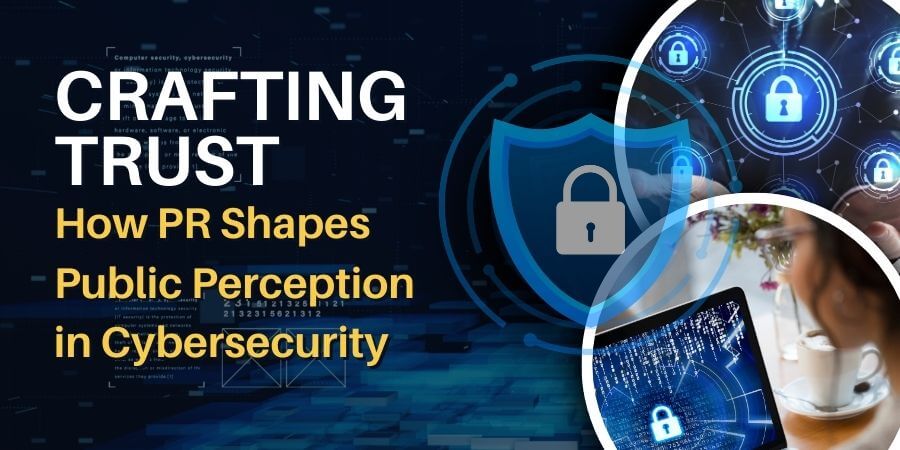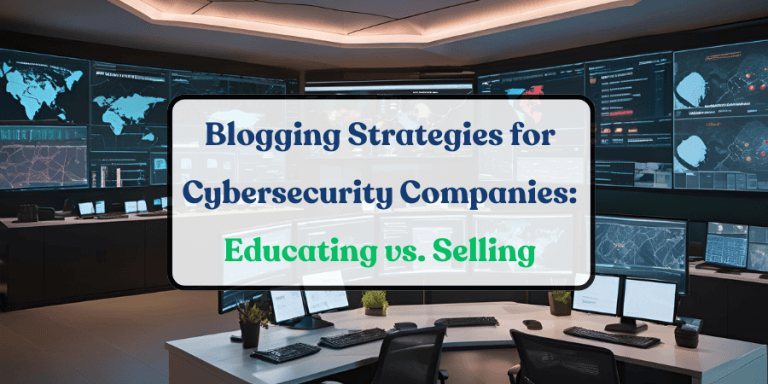What’s the most valuable asset in the cybersecurity industry? Undoubtedly, it’s trust. But how can you build and maintain that trust when a single breach can shatter your reputation? Public perception in cybersecurity directly impacts an organization’s ability to secure clients, maintain investor confidence, and differentiate itself in a highly scrutinized market. A 2024 report found that 60% of small businesses that experience a cyberattack shut down within six months. For larger enterprises, the financial and reputational fallout from a breach can be even more severe.
This is why Public Relations in cybersecurity is critical. A strong communications strategy helps cybersecurity firms and IT service providers manage crises, establish thought leadership, and reinforce credibility. Whether it’s through proactive media relations, crisis communication, or cybersecurity branding, effective PR ensures that an organization is perceived as a reliable partner in an increasingly complex security landscape.
In this blog, we will discuss how PR shapes public perception in cybersecurity, the role of cybersecurity PR firms, strategies for effective crisis management, and how businesses can build a resilient cyber brand that instills confidence in enterprise clients.
The Intersection of PR and Cybersecurity
PR plays a strategic role in shaping public perception of cybersecurity companies and their offerings. Unlike other industries, where brand perception is driven by product quality or customer experience, cybersecurity firms must establish trust through expertise, transparency, and authority.
Key elements of PR in cybersecurity include:
- Managing Risk Communication – Enterprises want clear, factual communication about security threats and solutions. A strong PR strategy ensures that a company is seen as a knowledgeable and proactive defender against cyber risks.
- Building Industry Credibility – Partnering with media outlets, participating in thought leadership discussions, and securing analyst mentions help position a company as a trusted name in cybersecurity.
- Handling Crisis Communication – The right messaging during a security incident can mitigate reputational damage. Without a structured crisis response, a company risks losing both clients and future business opportunities.
Building a Resilient Cyber Brand
A well-established cyber brand is more than just a logo and tagline. It is an assurance of reliability, security, and expertise. In B2B cybersecurity, branding goes beyond aesthetics and focuses on trust-building narratives that appeal to CISOs, IT decision-makers, and enterprise stakeholders.
Elements of effective cybersecurity branding include:
Marketing technology is evolving rapidly, introducing new trends and opportunities for businesses . Following are a few important marketing trends companies need to take care of:
- Consistent Messaging – A clear, unified message about a company’s security practices and technological capabilities helps reinforce credibility and recognition.
- Thought Leadership – Regular contributions to industry discussions via whitepapers, reports, and keynote presentations reinforce expertise.
- Reputation Management – Proactively addressing security concerns and publicizing success stories ensures that a company’s brand remains strong even in times of crisis.
Strategic Cybersecurity PR Framework
A structured PR strategy enables cybersecurity firms to maintain leadership and credibility in an increasingly complex digital landscape. Here’s how companies can integrate effective cybersecurity PR into their marketing:
1. Competitive Differentiation Through Narrative Design
- Pain-Driven Positioning – Position your brand by emphasizing organizational risk management, such as ‘Ensure SEC compliance while reducing breach response costs by 63%’ over technical jargon like ‘Advanced zero-day threat detection.’
- Power of storytelling – Instead of just presenting threats and statistics, effective cybersecurity branding involves crafting narratives that make security relatable to business leaders.
- Leveraging Statistics to Shape Public Perception – Incorporating credible statistics strengthens public perception by validating a company’s security claims, thereby enhancing credibility through marketing and PR efforts.
- Authority Architecture – Deploy tiered thought leadership across platforms:
| Platform | Content Strategy |
|---|---|
| Industry Reports | Annual threat landscape analyses |
| CISO-authored breach prevention series | |
| Podcasts | Joint episodes with compliance experts |
2. Effective Crisis Management
Companies must prepare for security breaches with a pre-, during-, and post-crisis PR approach
- Pre-Crisis: Conduct quarterly media training, develop breach response templates, and secure standing interview slots with cybersecurity publications.
- During Crisis: Publish an incident dashboard within four hours, activate social listening tools, and ensure consistent, transparent communication.
- Post-Crisis: Launch improvement roadmaps with verifiable milestones, secure third-party validation, and proactively engage with analysts like Gartner and Forrester.
Stat: Companies with pre-built crisis plans retain 23% more customers post-breach.
3. SEO-Driven PR Momentum
An SEO-optimized PR strategy enhances visibility and demand generation:
- Allocate budgets to data reports (e.g., breach cost calculators).
- Optimize press releases for “cybersecurity solutions” keywords.
- Repurpose analyst quotes into short-form content like TikTok/Reels explainers.
ROI Driver: SEO-optimized PR generates 3x more MQLs than traditional ads.
4. Trust Metrics That Move the Needle
| Metric | Optimization Tactics |
|---|---|
| Share of Voice | Compete on G2/Capterra reviews |
| Message Pull-Through | Educate media on 3 core differentiators |
| Crisis Response Time less than 2 hours | Pre-draft 10 scenario playbooks |
The Role of Cybersecurity PR Agencies and Firms
Navigating the complexities of PR in cybersecurity requires a deep understanding of both technology and media dynamics. This is where a cybersecurity PR agency or cybersecurity PR firm becomes invaluable.
These specialized firms offer:
- Media Relations & Analyst Briefings – Ensuring coverage in leading cybersecurity publications and securing mentions in analyst reports from firms like Gartner and Forrester.
- Crisis Management – Developing response plans for data breaches or service outages to mitigate reputational damage.
- Executive Positioning – Establishing key company leaders as industry experts through speaking engagements, interviews, and bylined articles.
A strategic partnership with a cybersecurity PR firm ensures that an organization is consistently positioned as a trusted industry leader, whether during periods of growth or crisis.
Strategies for Enhancing Public Perception
A strong public perception in cybersecurity doesn’t happen by chance, it requires a strategic, ongoing effort to build trust and credibility. From transparent communication to proactive thought leadership, organizations must take deliberate steps to position themselves as reliable security partners. Below are key strategies that cybersecurity firms can implement to strengthen their reputation and differentiate themselves in the market:
1. Transparency and Proactive Communication
A cybersecurity company that openly discusses its security measures, compliance efforts, and ongoing risk mitigation strategies builds confidence with enterprise buyers. Transparency in addressing security concerns reassures potential clients and mitigates fear-driven hesitation.
2. Industry Education & Awareness Campaigns
B2B decision-makers prioritize vendors that demonstrate a clear understanding of cybersecurity risks and best practices. Investing in thought leadership content—such as reports, webinars, and explainer videos—helps reinforce a firm’s authority in the space.
3. Effective Crisis Management
Even the most secure organizations face security incidents. Having a well-structured crisis communication plan allows businesses to respond swiftly and professionally, preventing long-term reputational damage. A well-handled crisis can even enhance public perception by demonstrating accountability and preparedness.
Gutenberg’s Approach to Cybersecurity Public Relations
Gutenberg, a leading cybersecurity PR agency, specializes in helping security firms establish thought leadership and manage their cyber brand effectively. Through a combination of media outreach, digital strategy, and executive positioning, Gutenberg ensures that cybersecurity brands build and maintain trust in the marketplace. Their focus on storytelling, strategic messaging, and crisis management makes them valuable partners for organizations looking to enhance their public perception and reputation in the industry.
Conclusion
For cybersecurity firms, managing public perception is just as critical as developing security solutions. A strong PR strategy not only helps build credibility but also ensures resilience during crises. B2B enterprises are highly selective when choosing security partners, and an organization’s cyber brand can be a deciding factor in winning or losing business.
Working with a specialized cybersecurity PR firm like Gutenberg ensures that companies effectively communicate their expertise, reinforce trust, and position themselves as leaders in an increasingly competitive market. In cybersecurity, trust isn’t just earned through technology, it is built through strategic communication.











